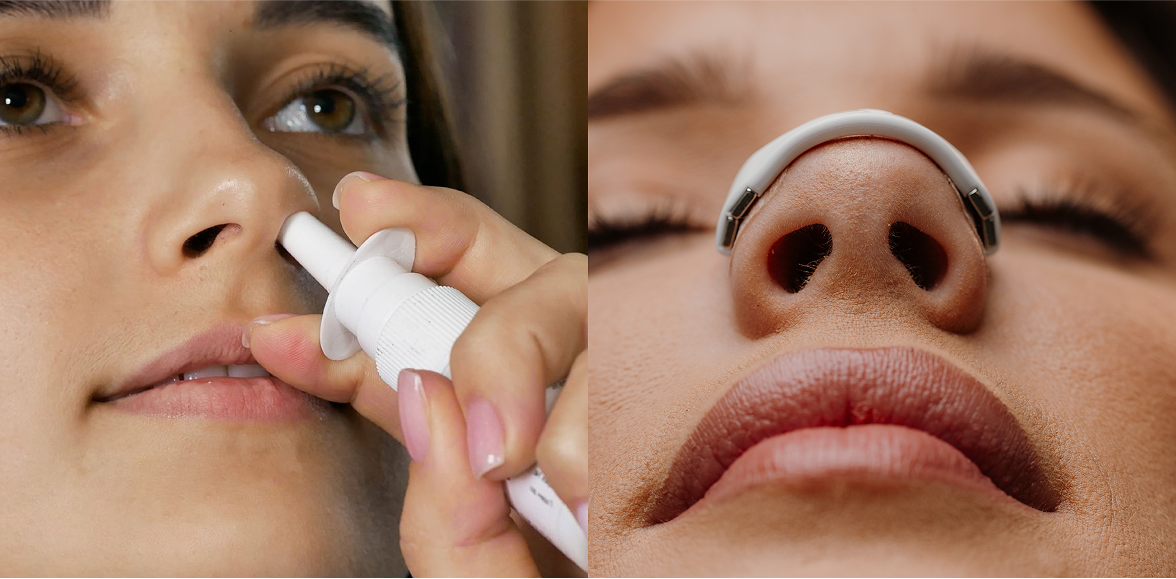Discover how nasal breathing enhances mindfulness, calms stress, and deepens meditation. Learn breathing techniques and how to breathe better with Intake.
Why Your Nose Is the Gateway to Calm
In today’s nonstop world, stress and anxiety are constant companions. Many turn to meditation and mindfulness to find relief—but one often overlooked element can make or break your practice: how you breathe.
Nasal breathing—as opposed to mouth breathing—is a natural, powerful way to calm the nervous system, deepen meditation, and support your overall wellness and quality of life. In this article, we’ll explore why nasal breathing is essential for effective meditation and stress relief, share practical techniques, and introduce a solution that helps you breathe better: Intake Breathing magnetic nasal strips.
 How Nasal Breathing Calms the Mind and Body
How Nasal Breathing Calms the Mind and Body
Nasal breathing does more than just move air in and out—it activates your parasympathetic nervous system, which is responsible for the body’s rest-and-digest mode. When you breathe through your nose, your heart rate slows, your blood pressure stabilizes, and your body begins to relax.
Key Benefits:
- Releases nitric oxide to enhance oxygen absorption
- Improves heart rate variability (HRV), a marker of stress resilience
- Reduces overbreathing and hyperventilation linked to anxiety
- Supports deeper states of mindfulness

1. Box Breathing (4-4-4-4)
Used by Navy SEALs for focus and stress control.
How to do it:
Inhale through the nose for 4 seconds → Hold for 4 → Exhale through the nose for 4 → Hold for 4. Repeat 5–10 times.
More on Box Breathing
2. Resonant (Coherent) Breathing
This method promotes calm by syncing breath and heart rhythm.
How to do it:
Breathe in and out through your nose at a pace of 5–6 breaths per minute. Practice for 10 minutes to reduce stress.
Study Reference
3. Diaphragmatic (Belly) Breathing
Activates the vagus nerve, helping the body shift into a relaxed state.
How to do it:
Place a hand on your belly. Inhale slowly through your nose, letting your belly rise. Exhale through your nose. Repeat for 5 minutes.
How it works
4. Alternate Nostril Breathing (Nadi Shodhana)
A yogic technique that balances the brain and calms racing thoughts.
How to do it:
Close one nostril, inhale through the other. Switch sides and repeat. Focus on the rhythm and breath. Do 5–10 rounds.
5. Mindful Body Scan with Nasal Focus
Integrates body awareness with breath for full-body relaxation.
How to do it:
Lie down or sit comfortably. Breathe through your nose, and mentally scan each part of your body, releasing tension with each exhale.
Guided session

Breathing through your mouth often triggers shallow, fast breaths that stimulate the sympathetic nervous system—your fight-or-flight mode. This can actually increase anxiety during meditation instead of reducing it.
Mouth breathing also leads to:
- Dry mouth and throat
- Snoring or disrupted sleep
- Poor oxygenation and reduced endurance
That’s why consistent nasal breathing is essential for anyone seeking the true benefits of mindfulness, meditation, and stress relief.
How Intake Breathing Can Help
If nasal congestion, habit, or anatomy makes nose breathing difficult during your practice, Intake Breathing offers a simple, drug-free solution.

How to Use Intake During Meditation:
- Clean and dry the nose area
- Apply the Intake magnetic strip above each nostril
- Attach the reusable magnetic band
- Begin your meditation with enhanced airflow and focus
- Clean and dry the nose area
 to elevate your practice.
to elevate your practice.

Mindfulness isn’t just about sitting still—it’s about breathing with intention. And when that breath flows through your nose, it becomes a powerful tool to support your mental and emotional balance.
Whether you're a beginner or experienced meditator, try pairing your practice with nasal breathing and Intake’s magnetic nasal strips. You may be surprised by how much calmer, clearer, and more present you feel.




